Please click here to see more information and solutions.
Site maintenance: Sunday, April 28, 3:00am EST - 6:00am EST read more
America's Favorite Coin Shoppe
This is a glossary of coin terms that you might find on this site or elsewhere.
Do you have any suggestions or comments? Words you’d like to see added to the glossary? By all means, please send us a message using the Contact Us link in the header or footer!
(abbr) About Uncirculated. This grade is applied to a coin which has been lightly circulated.
When coins are manufactured and transported in bags or other containers, coins can strike against each other and create dents. These are called “Bag Marks”. Larger, heavier coins (such as half dollars or silver dollars) and coins made of softer metals (gold, silver and copper) are more susceptible to these marks. Since proof coins are manufactured and transported with more care, it is not as common to find a proof coin with bag marks on it.
A flat disk of metal intended to become a coin but which has not yet been impressed with the coin’s design. Also called a “planchet”.
Refers to a coin which has not been circulated and which still retains the majority of its original mint luster. Sometimes “Uncirculated” and “Brilliant Uncirculated” are used interchangeably. However “Brilliant” would not be applied to a coin which has significant defects impairing its eye appeal or which is lacking in luster.
The same as Red Book.
R.S. Yeoman’s A Guide Book of United States Coins published annually by Whitman Publishing. This book was first published in the 1940s and contains various details and retail pricing information for US coins from 1616 up to present time. Whitman also annually publishes a similar guide book referred to as the “Blue Book” (Handbook of United States Coins) which contains wholesale pricing information for US coins. This book can be used by a dealer to determine what to pay for coins, or by a coin collector who wishes to have an idea of what dealers might pay for specific coins.
In 1971, 1972, 1973 and 1974 the US Mint issued 40% silver Eisenhower Dollars for collectors in colored packaging. The Proofversion was issued in a brown box and the Brilliant Uncirculated version was issued in a blue envelope. Thus coin collectors and dealers have adopted the terms “Brown Ikes” and “Blue Ikes” to refer respectively to the proof and BU silver Eisenhower Dollars of these years.
(abbr) Brilliant Uncirculated.
Refers to a coin which has not been circulated and which still retains the majority of its original mint luster. Sometimes “Uncirculated” and “Brilliant Uncirculated” are used interchangeably. However “Brilliant” would not be applied to a coin which has significant defects impairing its eye appeal or which is lacking in luster.
The frostiness of the raised portions (such as the device or the lettering) of some proof coins. Visually, this frostiness makes the raised portions of the coin look whitish and completely eradicates the mirror-like finish one would otherwise see on these parts of the proof coin. When only the raised portions of the coin have this cameo effect, it creates an appealing contrast against the mirror-like finish of the coin’s field. The physical texture of the cameo effect can be compared to that of glass which has been acid etched.
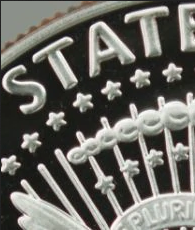
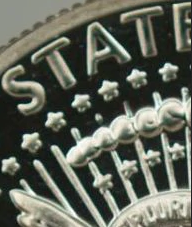
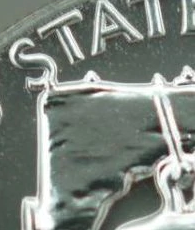
Prior to the 1970s the US mint was not entirely consistent in creating coins with complete, attractive cameo. Coin making equipment would be polished and prepared and the first many coins produced for that year or for that batch may have had a nice, deep cameo. As the equipment would begin to wear the cameo effect would diminish to the point where we would only classify the coins as “cameo”. When the cameo has diminished to the point where it was significantly incomplete, no cameo designation is warranted at all. In the 1980s the US mint perfected their methods and for modern years almost all proof coins you find will have a very complete, deep cameo finish on the device and lettering. Generally the earlier you go, the less likely proof coins are to have complete or attractive cameo on them. Since cameo is desired by many proof coin collectors, earlier coins with attractive cameo tend to cost more.
A coin from a mint set which has been removed from the set, but is still in its protective packaging. “Cello” is short for “cellophane”, the material used to protect the coins. The coins originally came in cellophane packaging as a full set. The coins were cut from the set but still have their individual have wrapping.
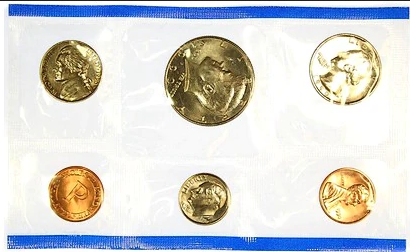

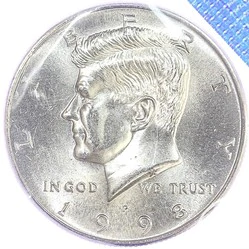
In coin grading, a coin graded choice will look pretty nice. It will have some flaws and marks, but not as many as a coin with a lower designation than “choice”. Gem coins will have even fewer flaws than choice coins and are thus usually more desirable, scarcer and priced higher. If nearly flaw-free coins are what you are looking for, seek those graded “Gem”, or the even more pristine “Superb Gem“. On the numerical grading scale (known as the Sheldon scale), choice is roughly equivalent to 63 or 64.
Circulate means to pass coins or money around as payment for goods or services. Thus a coin which has ever been used in this manner is a circulated coin. Circulation can most often be detected on a coin by examining the highest points of the coin’s device or the rim. When a coin is placed in a pocket and carried around for a few hours, its highest points inevitably rub against the cloth of the pocket and become slightly worn. This effect becomes more evident the longer the coin is treated in this way, however any signs of such rubbing or wear is a definite indication that the coin has been circulated, no matter how briefly.
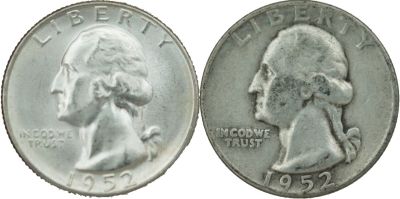
A small piece of metal, usually flat and circular, authorized by a government for use as money.
In coin grading, when a coin does not meet the usual minimum grading standards for that type of coin, it can be designated “Cull”. This means that the coin has significant problems with it which make it ungradable. Examples of cull coins could include a wheat penny which is so worn that the letters on the coin cannot be made out, or a silver dollar with a hole punched through it.Sometimes a cull coin can still have value to collectors, especially when the coin is a key date. A collector who wants to have a complete set of coins but who has a limited budget can use culls to complete the collection, and can later replace the culls with better coins when they can be found or afforded. At the higher end of grading coins, such as Uncirculated or Proof coins, a coin which has too many bag marks, scratches or spots can be deemed to be a cull as well.
(abbr) See Deep Cameo.
The complete, uniform and heavy frostiness of the raised portion on some proof coins. See cameo for a discussion of the different levels of cameo and examples.
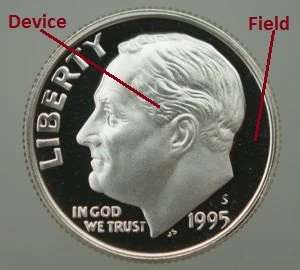 The main image or design on either face of a coin. This is often a bust or eagle or other image of national significance. The device is usually raised from the field of the coin.
The main image or design on either face of a coin. This is often a bust or eagle or other image of national significance. The device is usually raised from the field of the coin.
FAS stands for Father And Son and FAS Coins Inc is the corporate name that David Enders and Derrick Enders came up with in 2008 when incorporating their coin business. In addition to selling coins under the name FAS Coins, we do business on eBay and on our website as Dave’s Collectible Coins, a name which was created around 2004 by Dave when he began selling coins on eBay.
In coin grading, a coin graded gem will look very nice and will have very few flaws and marks. The only grade higher than Gem is Superb Gem, which is assigned to coins which are nearly flawless. Gem is usually the highest grade we assign to coins we sell at Dave’s Collectable Coins and you will likely find that these are also priced higher than other coins we have for sale. See Choice for more data and a comparison.
The designation assigned to any given coin indicating its condition, eye appeal, luster and severity of defects (or lack thereof). It can be either a numerical assignment or a nominal word or phrase. For example, MS-65 designates that the coin is in “Mint State” at a level of 65 on a scale that goes up to 70 (numerical). This same coin can also be called “Gem Uncirculated” (nominal). Generally the numerical grading scale is far more precise than the nominal grading scale. For example, coins which numerically rate VF-20, VF-25, VF-30 or VF-35 are all nominally referred to as “Very Fine”. For more data on the numerical grading scale, see Sheldon Scale.
A key date is a coin which, due to its scarcity or high demand, is more difficult to find. They usually cost much more than the other coins in the same series and are often the last coin(s) needed to complete a collection. In the Lincoln Wheat Penny series, the 1909 S penny with the initials “VDB” on the bottom of the reverse is a key date. Another key coin is the 1916 D dime in the Mercury Dime series. See Semi-Key for more data.
The amount of light reflected by a coin’s surface. When a coin is new it will usually have very brilliant luster. As it becomes circulated the luster rapidly diminishes. Similarly, if the coin is stored in conditions which cause its surface to tarnish, this also reduces the luster. Luster is desirable to many coin collectors.
(noun) One of the industrial facilities which manufactures coins. In the United States, most coins are produced (in modern times) at the Philadelphia Mint, Denver Mint, San Francisco Mint or the West Point Mint. (verb) To manufacture coins.
Annual sets of coins used to be issued by the Mint in cellophane packs. Coins which are still stored in this original cellophane plastic can be designated as “Mint Cello” coins. Here at Dave’s Collectible Coins we sell a lot of individual coins and will often cut the cellophane package into the different coin denominations and sell the separate coins still sealed in their own piece of the original mint cellophane. Modernly the US Mint issues their annual coin sets in stiff plastic and not cellophane. So that we don’t have to create another word, coins stored in this stiff plastic are still referred to as “Mint Cello” coins. For practical purposes, a Mint Cello coin is a coin which has been untouched by human hands since leaving the mint.
A mark on the coin indicating which mint produced it. It is usually a single letter found on the obverse or reverse of the coin. The most common mintmarks are “P” for Philadelphia, “D” for Denver, “S” for San Francisco, “W” for West Point, “O” for New Orleans and “CC” for Carson City. The absence of a mintmark on a coin often means that the coin was made at the Philadelphia mint. There are exceptions to this however, so consult a good reference guide (such as the Red Book) for the specific coin and year in question.
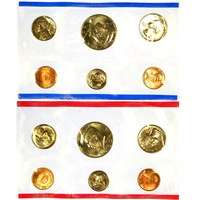 A collection of uncirculated coins, released by a mint. Such sets are usually released annually. They include all of the circulating coins of that year. Mint sets often include a token which indicates the mint that produced that set of coins.
A collection of uncirculated coins, released by a mint. Such sets are usually released annually. They include all of the circulating coins of that year. Mint sets often include a token which indicates the mint that produced that set of coins.
The designation of Mint State, meaning the coin has not been used for circulation. MS is usually followed by a numerical designation from 60 to 70 on the Sheldon Scale of coin grading. The higher numbers represent a coin that is in better condition and has fewer marks and defects. See Grade for additional data.
This is the definition for new item. 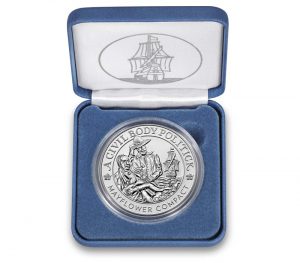 It is a new item. It links to Mintd
It is a new item. It links to Mintd
The study and collecting of coins, money and tokens.
A student and collector of coins, money and tokens.
The front side of the coin, opposite of the reverse. In the United States the obverse design is usually of a bust, such as that of a president or Lady Liberty. The date of the coin is also usually shown on the obverse.
(abbr) Professional Coin Grading Service. One of the most well-known coin certification companies in the United States.
A flat disk of metal intended to become a coin but which has not yet been impressed with the coin’s design. Also called a “blank”.
Refers to a coin which has been made using highly polished dies and with great care. Proof coins are not intended for circulation but are instead meant specifically for the collector to serve as pristine examples of the coins made for the year. Proof strike is only one of the methods of manufacturing coins that a mint can use. See Business Strike for comparison.
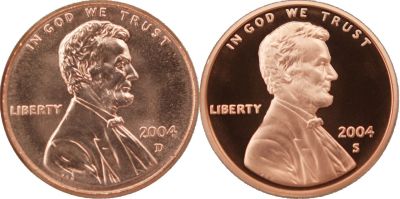
The designation of Proof as used in coin grading. PF is usually followed by a numerical designation from 60 to 70 on the Sheldon Scale of coin grading. The higher numbers represent a coin that is in better condition and has fewer marks and defects. See Grade for additional data. Some coin graders instead use the designation “PR” for proof, with no difference in meaning.
Indicates that the coin is not certified. Professionally certified coins are graded and placed into a hard plastic holder with a serial number and details of the coin’s qualities. Raw coins will generally either be loose or will be in some kind of plastic flip or container. They may be graded, however any grade assigned to a raw coin is strictly the opinion of the owner and generally implies no guarantee. At Dave’s Collectable Coins we sell raw coins and store them in mylar flips for protection. We assign our raw coins grades to help convey to the customer an idea of the shape the coin is in, so that we can give each coin an appropriate price and so that the customer can better understand why we chose that price.
R.S. Yeoman’s A Guide Book of United States Coins published annually by Whitman Publishing. This book was first published in the 1940s and contains various details and retail pricing information for US coins from 1616 up to present time. Whitman also annually publishes a similar guide book referred to as the “Blue Book” (Handbook of United States Coins) which contains wholesale pricing information for US coins. This book can be used by a dealer to determine what to pay for coins, or by a coin collector who wishes to have an idea of what dealers might pay for specific coins.
A restrike is a coin which was made later than the date shown on the coin.A well known example is the 1780 Maria Theresa Thaler. Hundreds of millions of Thalers were minted between 1780 and 2000 – all dated “1780”. All of them which were produced after 1780 are restrikes.
The back side of the coin, opposite of the obverse. In the United States the reverse usually depicts an image of an eagle, a shield, a building or something of similar national significance. For the Statehood Quarters and Parks Quarters program, the reverse image for each coin is a design representative of that state or park.
The part of either face of a coin which is raised all the way around the edge of the coin.
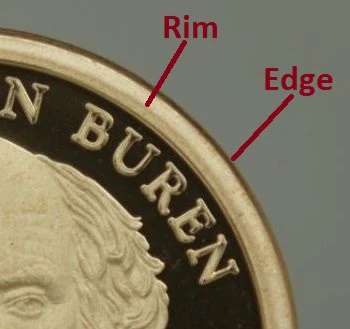
A semi-key coin is one which is not common but which is not one of the scarcest coins of the series. They can be harder to find than common coins and will usually be more highly priced. In the Lincoln Wheat Penny series, the 1931 S penny is a semi-key date coin. See Key Date for more data.
The modern numerical grading scale used for grading coins. The scale was created by American numismatist Dr. William H. Sheldon in 1949. This scale has become widely known and firmly accepted as the standard for coin grading in the US. The scale runs from 1 to 70 as follows:
For proof coins, the scale runs from PF-50 (“Circulated Proof”) to PF-70 (“Perfect Proof”). See Grade for more data on coin grading.
A coin that has a very small amount of circulation or an AU+. In the numerical numbering system it is an AU58. It comes from a dealer that might try to “slide” one or two into a BU roll when they are not BU.
(abbr) Stands for “Special Mint Set”. In 1965 the United States Mint ceased production of Proof coins. In their place, they issued a special set of collector coins which were more carefully made than normal circulating coins, but which yet did not meet the standards of Proof coins. These sets are termed “Special Mint Sets” and the coins in them can be referred to as “SMS” coins.These Special Mint Sets were produced in 1965, 1966 and 1967. In 1968 the Mint resumed production of the usual Proof coins.Since a complete set of Proof coins does not include these three years, collectors will often complete their collection by including nice examples of SMS coins from 1965, 1966 and 1967.
Money in the form of coins. Specie specifically refers to coins as opposed to other forms of money.
A photo of an item which is used to represent any item of similar kind which is for sale. For example, if one takes a photo of a 1965 Kennedy Half Dollar and then uses that photo to represent several different 1965 half dollars, this is a stock photo. Alternatively, a unique photo would be one of the exact item for sale. If one has five 1965 Kennedy Half Dollars to offer, one could take a picture of each one separately and use each picture to represent the corresponding half dollars uniquely.
(noun) Refers to the way the mint made the coin. Business strike means that the coin was made using machines and methods suitable for coins which would be circulated by the public in everyday transactions. Proof strike means that the coin was made with highly polished dies and great care was taken to ensure the coin was highly attractive. (verb) The act of impacting a blank coin planchet with a die to produce the coin’s lettering and images.
Superb (also referred to as “superb gem”) is a grading designation assigned to coins which are nearly flawless to the naked eye. It is possible to find flaws (fine defects, discoloration, abrasion or hairline scratches) on a coin classified as superb, however it usually requires magnification or at least good eyesight. Superb gem compares to 67, 68 or 69 on the numerical Sheldon grading scale. See Choice for a comparison to other grades.
A metal or plastic disc, such as a substitute for currency.
Refers to a coin which has never been used as money in everyday financial transactions. See circulated for more details and examples.
The easiest way to get in contact with us is by filling out the form and submitting it.
We will contact you as soon as we can.
David Enders
PO Box 508
Athens MI 49011
The Dave’s Collectible Coins customer service goal is simple:
We are committed to providing our customers total satisfaction. Every time. Guaranteed.
For non-urgent matters please use the form in this popup. For urgent matters please call 269-742-4716.
Customer service is available Monday – Friday 8:00am – 4:30pm EST